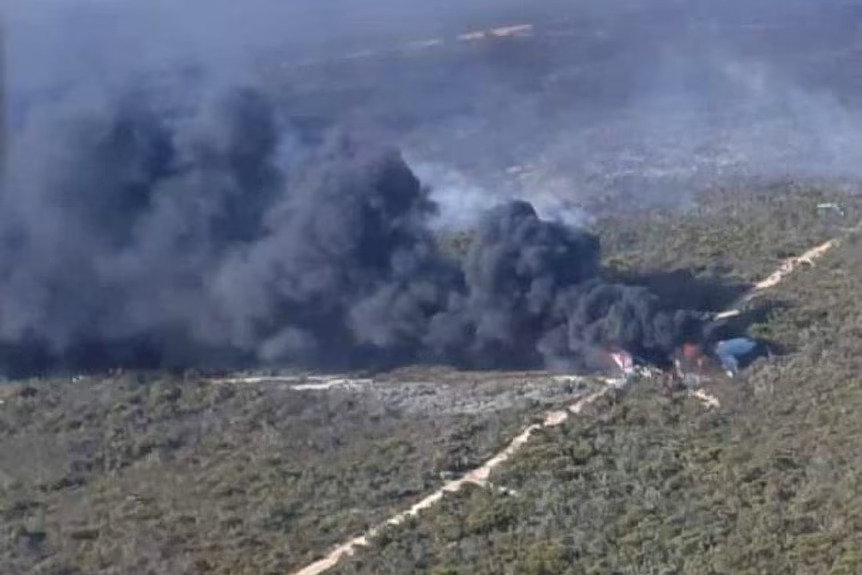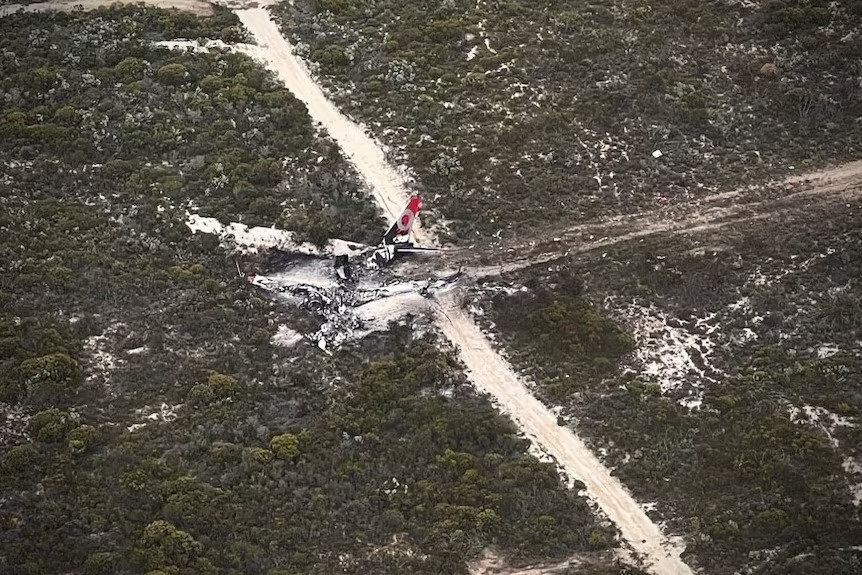Fire Fighting 737 Crashed in WA
Also 139 was the National LAT, "Phoenix", it was positioned in WA due to higher fire danger there relative to the east coast after the flooding and benign summer but there was no guarantee it would be in WA for the whole season.
Just like to say thanks to these crews , highly skilled , courages and living away from loved ones for months at a time so they can help save lives and millions of dollars worth of property in our country . A 737 , 747 , bae 146 or even a hurc is not a natural fire bomber , designed to live at flight levels . Nothing but respect for the skill required to do this job and it’s fricken great they got out . There will be more crashes and these pilots know that and they still strap in . Happy to see it’s not been a big thing here or on the news . Special mention to our military boys and girls also , similar sentiments.
The following 4 users liked this post by KAPAC:
BAC 1-11 G-ASJD, 24 August 1964, Tilshead, England.
Landed wheels-up following the inability to release a drag parachute during deep stall testing by the manufacturer.
Was recovered and repaired, going on to fly with British United and British Caledonian until 1971 when it became a military research aircraft (XX105) and flew until 2003, eventually being broken up in 2012.
The 737 accident is quite something, given the pylon mounted engines hanging below the fuselage. I'm assuming the gear wasn't down here either - we'll see.
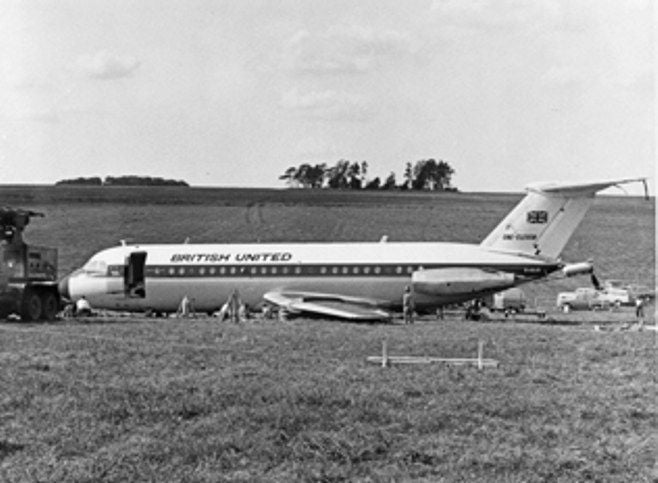
Landed wheels-up following the inability to release a drag parachute during deep stall testing by the manufacturer.
Was recovered and repaired, going on to fly with British United and British Caledonian until 1971 when it became a military research aircraft (XX105) and flew until 2003, eventually being broken up in 2012.
The 737 accident is quite something, given the pylon mounted engines hanging below the fuselage. I'm assuming the gear wasn't down here either - we'll see.

It’s not rocket science as to why the aircraft burnt post impact.
The following users liked this post:
The following users liked this post:
No specific information on the QF1, but it wouldn't be the first time an operator spent an excessive amount on a AOG repair because an extended wait would have been needed to get a replacement.
Sorry to bring facts into your conspiracy theory discussion

If that qualified as a golf course then many of my indirect golf shots would still be in bounds and I could play my next shot from roads, backyards, verandahs, creeks and even airports…….Similarly, If that qualified as 'off airport' then so would numerous other runway excursions where the aircraft returned to service.
Last edited by C441; 7th Feb 2023 at 20:34.
Pictures on TV last night of both pilots in hangar - talking and walking - no apparent injuries.
Very lucky - must have been a relatively flat sliding forced landing.
Very lucky - must have been a relatively flat sliding forced landing.
The following users liked this post:
Looking at the aerial footage you can see the two retardant drops clearly with the second directly behind the crash site. Looks like it may be exactly what the video earlier was talking about target fixation and they clipped the shallow ridge directly after the second drop, and slid to a stop. It does look very much like they were trying to tag the second drop onto the first line to form a break. Considering this seems to be a very common form of aerial firefighting mishap I wonder if they can mitigate it by adding another non flying crew member to monitor the drop while the pilots focus on flying and terrain, seems like if both pilots are watching the drop it's easy to forget whats ahead of you.
BTW I'm not saying this is exactly what happened but it fits pretty well with what the earlier video was talking about.
BTW I'm not saying this is exactly what happened but it fits pretty well with what the earlier video was talking about.
FWIW...To be strictly correct and contrary to popular opinion, the Qantas 747 didn't actually 'leave the airport'. It stopped in the wet, grassy runway overrun area short of the surrounding golf course, but that didn't stop it making a great story and source of the various quips related to the incident.
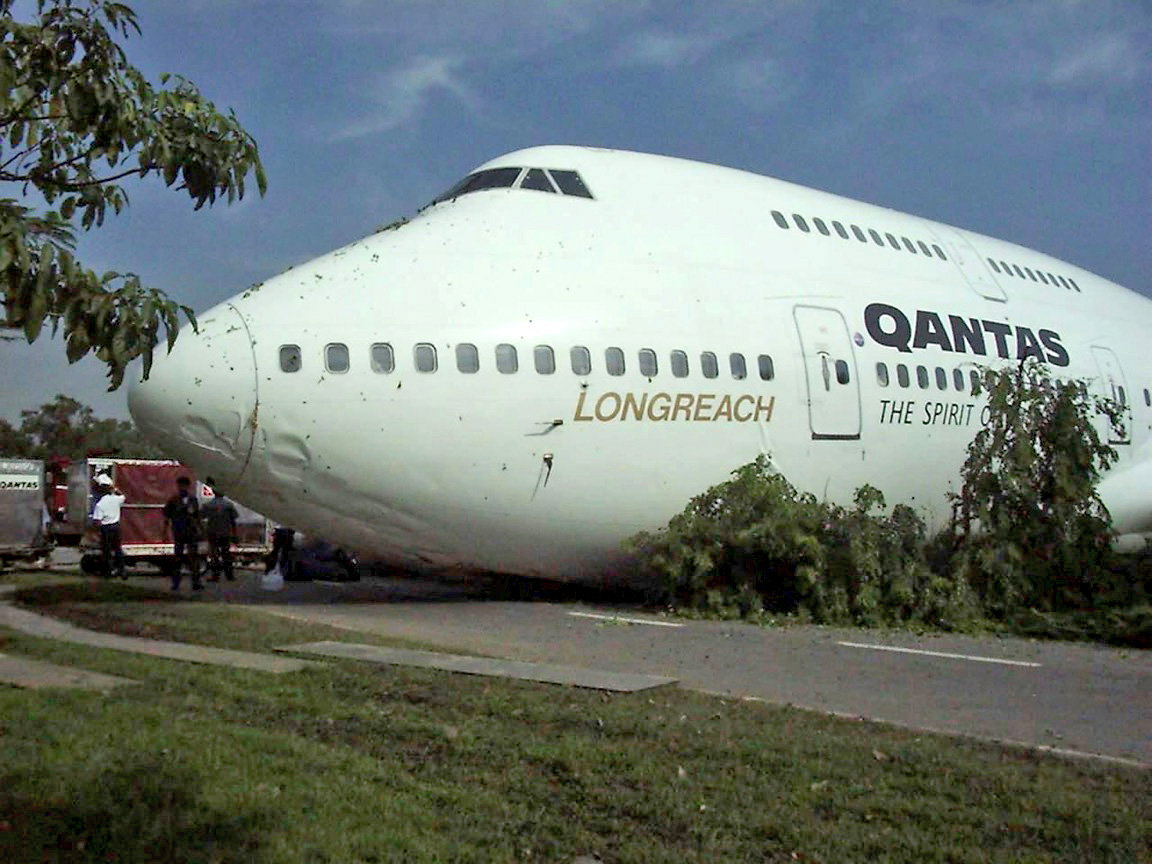
Just a bit of info for those wondering why the tanker was there at all. The Fitzgerald River National Park is a UNESCO Biosphere. The Park contains 75 species of plant that are seen no where else in the world. I can tell you, if you ever visit it, you'll see some weird and wacky flora. So, apart from ensuring the fire didn't spread to nearby communities, and mining interests, the Park itself is probably worth protecting.
The following 3 users liked this post by peuce:
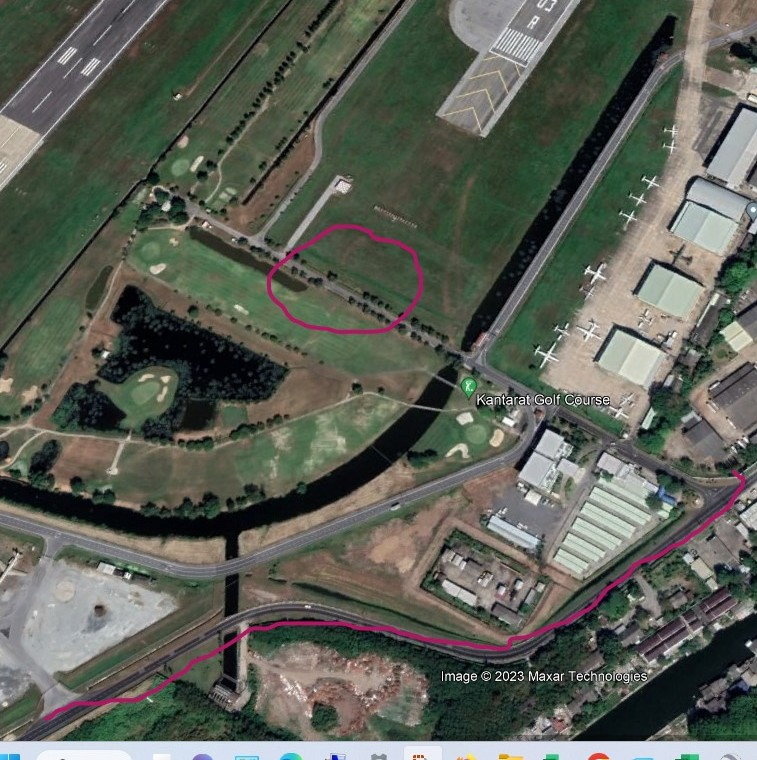
Kantarat Golf Course is entirely within the Don Muang boundaries.
Had they crossed that road they'd have been on the golf course but they'd have still been within the airport boundary.
Sorry DP it maybe tongue in cheek but doing low, low level that does have continually differing terrain due to differing location does perhaps merit observers, whilst a legal dive bomb approach of same runway is slightly different.
Ecce Homo! Loquitur...
Sorry, but am I callous to suggest, despite the nature of the operation, hitting a ridge line is not indicative of pilot skill,
The following users liked this post:
Cheap operator ...
Extremely poor management, lacking in awareness.
The visibility out of a B737 at best of times is limited. Add in a mix of smoke, and any other challenges of "fire attack" etc; .. simply ask the question.. Why were there not at least two observers in the cockpit; additional to the two flying pilots; both of the "eyes" would be fully qualified B737 pilot's.
I'm pleased the crew escaped with nothing more than a bruise or two from their seat belt.
But really ?? No observers ??
Extremely poor management, lacking in awareness.
The visibility out of a B737 at best of times is limited. Add in a mix of smoke, and any other challenges of "fire attack" etc; .. simply ask the question.. Why were there not at least two observers in the cockpit; additional to the two flying pilots; both of the "eyes" would be fully qualified B737 pilot's.
I'm pleased the crew escaped with nothing more than a bruise or two from their seat belt.
But really ?? No observers ??
Article in today's "The West Australian":
A water bomber that crashed while battling an out-of-control bushfire in the State’s south is believed to have clipped a hill, authorities have revealed.
The two pilots who miraculously walked away from Australia’s first Boeing 737 crash were set to be interviewed by investigators on Tuesday night after being discharged from hospital the previous day.
The water bomber, operated by Canadian contractor Coulson Aviation, crashed in Fitzgerald River National Park at 4.13pm on Monday while helping quell the blaze in Ravensthorpe and Hopetoun, bursting into flames after impact.
Australian Transport Safety Bureau chief commissioner Angus Mitchell said the jet appeared to have “potentially clipped the ridge line and has pancaked down”.
One of the pilots was identified as Coulson’s director of flight operations John Gallagher, pictured below left.
Matthew Boyko is believed to be the second pilot on board.
“Certainly, a horizontal landing as opposed to vertical into the ground makes a big difference,” Mr Mitchell said.
“But these pilots, I’m sure, are very lucky to be alive. We are very fortunate to be standing here and not to be mourning the death of some firefighters. That’s a remarkable outcome.”
Once the site was safe to enter, air crash investigators would gather flight data and cockpit recorders, Mr Mitchell said. “They look at any of those potentially mission-critical aspects of the flight, particularly engineering, to see if that gives us any idea,” he said.
“This is certainly the first 737 collision with terrain that we’ve had in Australia. That in itself is quite significant — for an aircraft that size to come down in Australia.
“There’s nothing to suggest at this stage that there’s any ramifications to the global fleet.”
With the fire the plane was tackling still at the watch and act level — and Cowerdup in the middle of the zone elevated to an emergency warning — air crash investigators were unable to get on site on Tuesday, Mr Mitchell said.
The jet, nicknamed Phoenix, had just completed the second half of a “split” load retardant drop when it smashed into the ground about 20 seconds later, Department of Fire and Emergency Services Commissioner Darren Klemm said.
Emergency Services Minister Stephen Dawson said the pilots’ survival was “nothing short of miraculous”.
After a Coulson C130 Hercules water bomber crashed in NSW in 2020 — killing three crew — the ATSB found major shortcomings in Coulson’s practices.
Mr Mitchell said there could be “serious repercussions” from the investigation, with the ATSB potentially handing recommendations to the operator and broader aviation sector “so something like this doesn’t occur again”.
A TALE OF SURVIVAL
REBECCA LE MAYA water bomber that crashed while battling an out-of-control bushfire in the State’s south is believed to have clipped a hill, authorities have revealed.
The two pilots who miraculously walked away from Australia’s first Boeing 737 crash were set to be interviewed by investigators on Tuesday night after being discharged from hospital the previous day.
The water bomber, operated by Canadian contractor Coulson Aviation, crashed in Fitzgerald River National Park at 4.13pm on Monday while helping quell the blaze in Ravensthorpe and Hopetoun, bursting into flames after impact.
Australian Transport Safety Bureau chief commissioner Angus Mitchell said the jet appeared to have “potentially clipped the ridge line and has pancaked down”.
One of the pilots was identified as Coulson’s director of flight operations John Gallagher, pictured below left.
Matthew Boyko is believed to be the second pilot on board.
“Certainly, a horizontal landing as opposed to vertical into the ground makes a big difference,” Mr Mitchell said.
“But these pilots, I’m sure, are very lucky to be alive. We are very fortunate to be standing here and not to be mourning the death of some firefighters. That’s a remarkable outcome.”
Once the site was safe to enter, air crash investigators would gather flight data and cockpit recorders, Mr Mitchell said. “They look at any of those potentially mission-critical aspects of the flight, particularly engineering, to see if that gives us any idea,” he said.
“This is certainly the first 737 collision with terrain that we’ve had in Australia. That in itself is quite significant — for an aircraft that size to come down in Australia.
“There’s nothing to suggest at this stage that there’s any ramifications to the global fleet.”
With the fire the plane was tackling still at the watch and act level — and Cowerdup in the middle of the zone elevated to an emergency warning — air crash investigators were unable to get on site on Tuesday, Mr Mitchell said.
The jet, nicknamed Phoenix, had just completed the second half of a “split” load retardant drop when it smashed into the ground about 20 seconds later, Department of Fire and Emergency Services Commissioner Darren Klemm said.
Emergency Services Minister Stephen Dawson said the pilots’ survival was “nothing short of miraculous”.
After a Coulson C130 Hercules water bomber crashed in NSW in 2020 — killing three crew — the ATSB found major shortcomings in Coulson’s practices.
Mr Mitchell said there could be “serious repercussions” from the investigation, with the ATSB potentially handing recommendations to the operator and broader aviation sector “so something like this doesn’t occur again”.
The following users liked this post:




